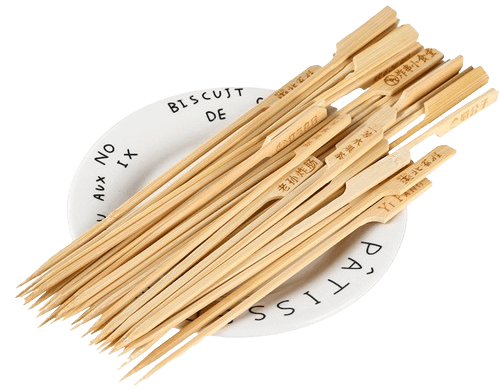Key Takeaways
- Origin: Chopsticks were first used in China around 1200 B.C. as cooking tools.
- Cultural Impact: Influenced significantly by Confucian ideals promoting non-violence, leading to their adaptation as eating utensils by 400 A.D.
- Material Evolution: Transitioned from bamboo and wood to luxurious materials like ivory and silver, reflecting social status and technological advances.
- Global Spread: By 500 A.D., chopsticks had spread across Asia, including Japan, Korea, and Vietnam, each region adapting its unique style.
- Modern Use: Chopsticks remain a vital part of dining culture worldwide, evolving with modern ergonomic designs and sustainable materials.
I. Introduction
Chopsticks are not merely tools for eating but are steeped in history and culture, particularly in Asia. They reflect centuries of evolution, from simple cooking implements to symbols of a refined dining experience. At Ecostix Global, we recognize the deep cultural significance of chopsticks and aim to combine traditional craftsmanship with modern sustainability. This article explores the origins, cultural impact, and global journey of chopsticks.
II. Historical Origins of Chopsticks
Chopsticks originated in ancient China as practical tools to retrieve food from boiling water. Archaeological evidence suggests their use as early as 1200 B.C. in the Shang dynasty. Initially used for cooking, the population boom and resource scarcity around 400 A.D. led to their adaptation as eating utensils. This change was partly influenced by Confucius, who advocated against using knives at the dining table to avoid violence and aggression, promoting a peaceful meal environment.
III. Evolution and Cultural Adaptation
As chopsticks gained popularity in China, their use spread across Asia. By 500 A.D., they had become common in Japan, Korea, and Vietnam, with each culture adopting unique designs suited to their dietary customs. For instance, Japanese chopsticks are typically pointed and shorter, ideal for precise handling of sushi, while Chinese chopsticks are longer and blunter, designed for reaching into deep pots or platters.
IV. Material and Design Innovations
The materials used for making chopsticks have evolved significantly, reflecting both technological advances and social changes. Early chopsticks were primarily made from bamboo or wood, materials chosen for their availability and ease of carving. Over time, artisans began crafting chopsticks from more luxurious materials such as ivory, jade, and silver, especially for the wealthy or for use in religious rituals. This shift not only represented an elevation in dining culture but also an expression of status and artistic expression.
V. Modern Chopsticks and Their Global Reach
Today, chopsticks are used worldwide, transcending their Asian origins. The introduction of disposable bamboo chopsticks revolutionized their use globally, catering to the fast-paced lifestyle of modern dining while addressing hygiene concerns. At Ecostix Global, we emphasize sustainability by promoting reusable bamboo chopsticks, which offer an eco-friendly alternative to disposable versions, aligning with our vision of reducing environmental impact.
VI. Cultural Significance and Symbolism
Chopsticks are not merely dining tools; they embody deep cultural significance and symbolism across Asia. In Chinese culture, chopsticks symbolize more than functionality—they represent life-long blessings and are often gifted during weddings, symbolizing the wish for the newlyweds’ happiness and prosperity. Similarly, in Japan, a set of chopsticks can represent harmony, as they are always used in pairs, reflecting the ideal of cooperation and equality in relationships.
VII. Chopsticks in Contemporary Society
In modern times, chopsticks have maintained their cultural relevance while adapting to contemporary needs and environmental concerns. They have become a staple in global dining etiquette, appreciated not only in Asian cuisines but also in fusion and international dishes. This widespread use has prompted innovations in chopstick design, including non-slip grips and customizable lengths to accommodate different hand sizes, enhancing the dining experience for users worldwide.
Ecostix Global is at the forefront of these innovations, focusing on creating high-quality, sustainable bamboo chopsticks that cater to both traditional users and modern, eco-conscious consumers. Our products reflect a commitment to sustainability, marrying traditional craftsmanship with modern ecological concerns. For more on how we ensure durability and safety in our products, visit our bamboo chopsticks durability and safety page.
VIII. Conclusion
Chopsticks have transcended their origins as simple cooking tools to become integral parts of the dining culture worldwide. Their evolution from wood and bamboo to materials like ivory and silver mirrors humanity’s technological and social advancements. Today, chopsticks are not just utensils but symbols of a rich, enduring heritage that continues to evolve and adapt in a globalized world. As Ecostix Global strives to promote sustainable and aesthetically pleasing bamboo products, we invite you to join us in this cultural journey and embrace the sustainable practices that chopsticks represent.
To learn more about our commitment to sustainability and the wide range of products we offer, please visit our product page.
By understanding and appreciating the deep historical roots and cultural significance of chopsticks, we can better appreciate their place in both history and modern society, encouraging a more thoughtful and sustainable approach to everyday dining experiences.



